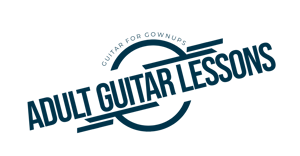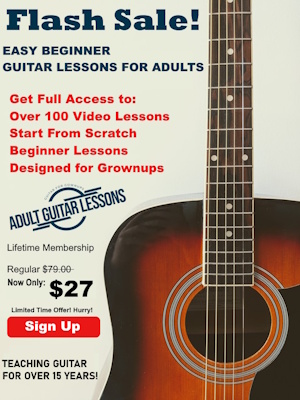Let’s “Finger” it Out!
Anyone who’s played in a band for any length of time has surely been subject to the hoots and howls for “Freebird” that typically begin pelting the stage somewhere around the third or fourth set.
Having been on the receiving end of such rants for more years than I can count, it has been interesting to see the reaction of numerous band members when the post midnight chants start rolling in for what is arguably the most requested song in modern history.
On more than one occasion I have cowered behind the PA cabs, eying the closest exit, while someone in the band gets on the mike and announces “I got your Free Bird!”. This, of course, accompanied by a universally recognized gesture.
The title of this article, of course, has nothing to do with giving your A chords that kind of finger – although we will discuss giving your open A chords a “one finger salute”, of sorts.
Conventional guitar lessons and teaching methods have a tendency to do what many educational programs do in almost any discipline of study – make things harder. The way beginning guitar students are taught to play an A major chord in the open position is one perfect example of that.
When I first picked up the guitar, well over thirty years ago, I still remember the Alfred’s 1 guitar book that I used to figure out where to awkwardly put my fingers. Very early in the process I had to learn how to play the A major chord. In the book was a chord diagram that indicated that the A chord in the open position should be played by placing the:
2nd finger on the 2nd fret of the 4th string.
3rd finger on the 2nd fret of the 3rd string.
And the…
4th finger on the 2nd fret of the 2nd string.
Throughout the years I have seen other lesson programs that instruct students to use other fingering combination’s for the A chord. Some say to use the 1st, 2nd and 3rd fingers in succession. I have even seen some suggest using a 2 – 1 – 3 fingering combination (which to me seems extremely awkward).
The one thing I have rarely seen is a guitar instruction program that shows students how to play the A chord the easiest way.
In our guitar course we talk a lot about visualization and chord “shapes”. If you take a moment to visualize the shape of an A major chord in the open position, you will see that the chord shape is simply a straight line across the second fret of the 2nd, 3rd and 4th strings.

Making it Easier
As a firm believer in looking for the fastest, easiest and simplest way to play things on the guitar, it just has never made good sense to me to have to finagle three fingers in various combinations to play this chord, when one finger will do the trick!
An open A major chord can, with very little effort, be played by using the first finger to “barre” the 2nd fret of the 2nd, 3rd and 4th strings. The hardest part of playing the chord this way is getting your finger placement just right so that the 5th string (A) and the 1st string (E) are not inadvertently muted.
This is accomplished by playing the notes with the flat part of the finger, from the tip to about the first joint, then bending the main finger joint at such an angle that the 1st (E) string is able to sustain clearly.
In addition, there is no reason to limit yourself to playing the open A chord with only the first finger. Many times it will behoove you to use the second finger or even the third finger to play the chord.
In fact, if you are playing a barre chord in the “A” shape, you are already using the third finger to play the “A” shape, only in a higher fret position. So why not use the one finger method to play the A chord in the open position?
There are times when using the one finger A chord technique, that you might use different fingers to play the chord in the same chord progression.
For example, when playing the common E – A – D – A chord progression, you might transition from the E chord to the A chord by playing the A with the second finger. Then when transitioning from the D chord back to the A, you could use the first finger.
This way your hand falls naturally into place throughout each chord change, making the transitions much more smooth and effortless.
There are some occasions when using the three finger method to play the A chord makes more sense then the one finger method. For instance, when you are playing a walk down from the A to the A7 and you need the extra fingers to make the walk down formations.
But other than on those times there is absolutely no reason to work any harder than you have to when playing the A chord.
So the next time you pick up your guitar, try giving your A chord “the finger”, regardless of what the books are telling you. You will find that once you get used to playing them this way, it will be difficult to ever imagine going back to the old, clumsy three finger method!



